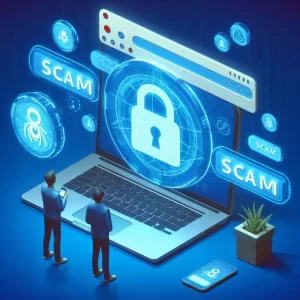Spotted a website with deals so sweet they make your wallet sing? Hold on to your credit card, because not all that glitters is gold (or, you know, a safe online store). Staying safe online is kind of a big deal these days, so let’s break down how to tell the good guys from the phoney baloney websites.
The Padlock Party: Your First Sign of Safety
Ever noticed that little lock icon in your browser’s address bar? That’s your first clue! It means the website has an SSL certificate, basically a fancy way of saying your info is scrambled like a secret code during checkout. Still, a lock isn’t a guaranteed party pass. Let’s dig deeper.
URL Patrol: Watch Out for Sneaky Imposters!
Phishing websites love to copy real ones, hoping you’ll spill your login details. They might have URLs that look almost identical, with a sneaky typo or a different ending (.com vs .net). Before you log in, double-check that address like you’re checking for homework typos! If it looks fishy, ditch it and head straight to the website you know and trust.
Deals Too Good to Be True? Probably Are.
Scored a diamond ring for the price of a gumball? Maybe hit the back button. Safe websites rarely have crazy low prices that seem unreal. These deals are usually bait to lure you in and steal your info. If something looks too good to be true, it probably is.
Website Sleuthing: Signs of a Safe Spot
A safe website should look, well, safe! Typos, weird grammar, and wonky layouts are red flags. Legit sites usually have an “About Us” section telling you who they are and how to contact them. Plus, they’ll have clear privacy and return policies – you know, the boring but important stuff.
Reviews: The Online Report Card
Before trusting a new site, do a quick web search for reviews. What’s the online buzz? Lots of happy customers? Great! If you see a chorus of complaints, steer clear and find a website with a better reputation.
Bookmarking Your Squad: Safe Sites on Speed Dial
Once you find websites you trust, bookmark them! This creates your own personal safe zone, so you don’t have to type the whole address every time. Plus, it helps you avoid accidentally landing on a fake site that looks similar.
Staying Safe Online: It’s a Marathon, Not a Sprint
Remember, online safety is a never-ending quest. New scams pop up all the time. But by keeping these tips in mind and staying alert, you’ll be a website whiz, spotting safe online spots with ease!
Now go forth and conquer the internet, but do it safely!
